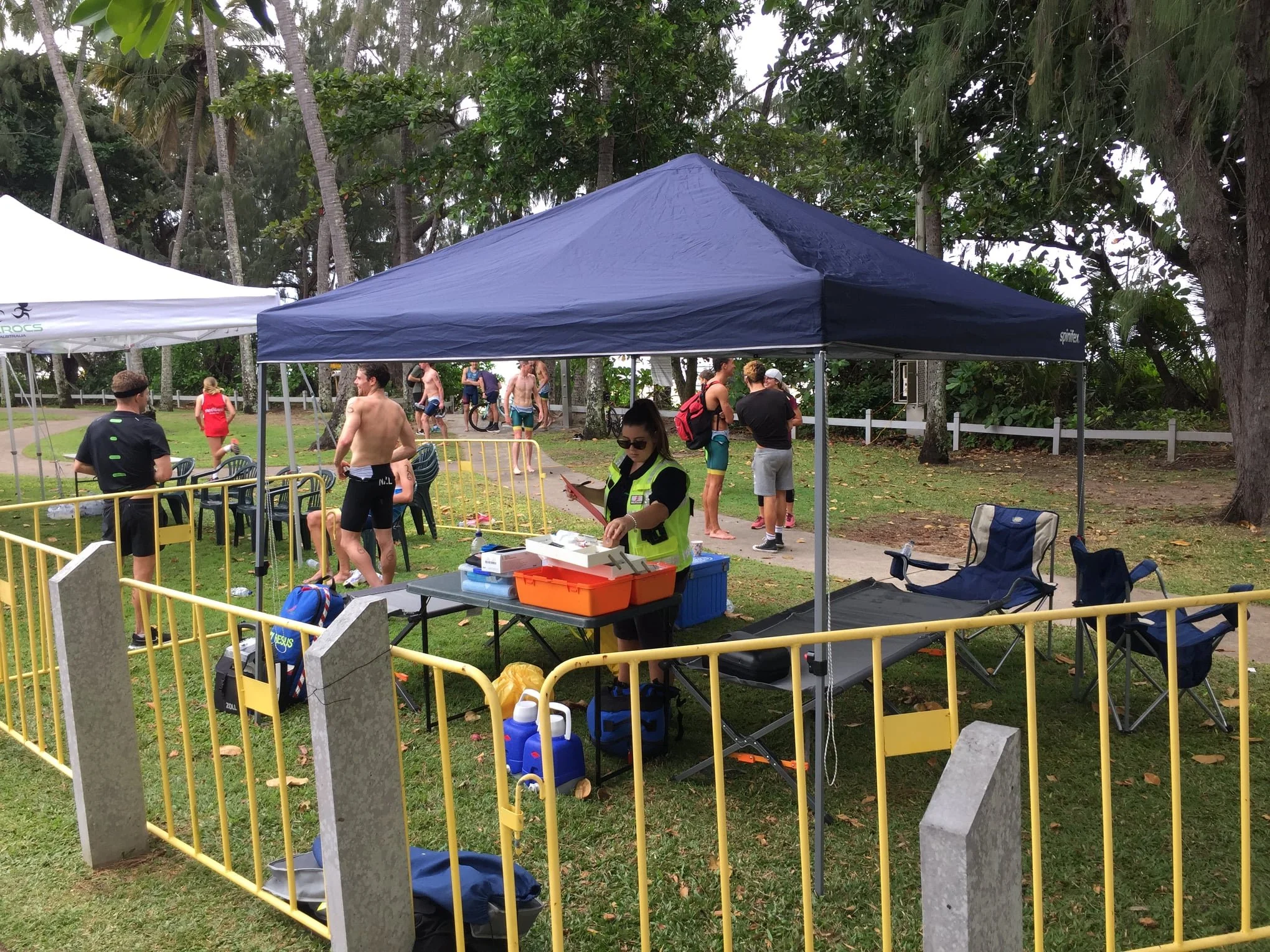Is First Aid Enough?
The first question that needs to be addressed is whether basic First Aid, such as that provided by volunteer and charity organisations is enough for major events and venues around Australia.
First Aid only encompasses Basic Life Support (or BLS), including very basic CPR (Cardio Pulmonary Resuscitation) and the treatment of minor aches, pains, scratches, bruises and bleeding.
First aiders have a basic understanding of common medical emergencies and can only offer “first aid” which may be adequate under limited circumstances, but not for many Events. When an Event Organiser is planning an event and there are higher elements of risk, dictated by the event activities, a high level of Pre-Hospital Emergency Care is required, for example, an Onsite Paramedic Service, including an ambulance where indicated.
Onsite Paramedic Service provided by Paramedics and AEMTs, includes airway management utilising oxygen therapy, Advanced Airways and sophisticated procedures such as Supraglottic Airways (as used in anaesthesia and intensive care environments). Other Onsite Paramedic Service skills include the use of more advanced Defibrillators, mechanical CPR devices, placement of Intravenous (IV) lines, Acute Spinal Injury Management and a range of medications and procedures under Clinical Practice Guidelines (CPGs). State and Territory Ambulances respond to public calls as a priority. Even in urban events/venues, State Ambulance services may be over 20 minutes away (especially given the traffic congestion accompanying such events) and so it is now appropriate to supply an Onsite Paramedic Service to respond and treat immediately while the Ambulance is on its way.
The FRA Onsite Paramedic Service can respond within the event grounds utilising Paramedic Ambulances, other means of transport or on foot if the going is rough. They will be fully equipped and trained to treat the patient immediately to Advanced Life Support (ALS) standard.
Charitable organisations sometimes broadly generalise that “some of '' their members are doctors, nurses or even paramedics' in their day to day jobs, but event and venue organisers are acutely conscious that there is never any guarantee that this standard of first aider will turn up on the day. Regardless of the qualification of the responder, without emergency medications and advanced Ambulance equipment, these responders are simply first aiders. In many cases witnessed by event organisers, one “senior” volunteer will supervise a large group of “cadets” or juniors. The usual feeling amongst venue/event managers is that the standard of care is actually quite low and seldom what was promised or envisaged. Volunteer first aiders often boast of equipment such as defibrillators and oxygen systems (in many cases provided as a donation to their organisation by the public or government), but if their volunteers are not sufficiently trained or experienced in its use this equipment may be ineffective or even detrimental in their hands. A professional Onsite Paramedic Service is indicated for many events because of the probability of some accidents, injuries or illnesses. Event organisers realise that they are covering the risk more effectively by employing a private Onsite Paramedic Service that can guarantee a higher level of care, as opposed to standard first aiders.

